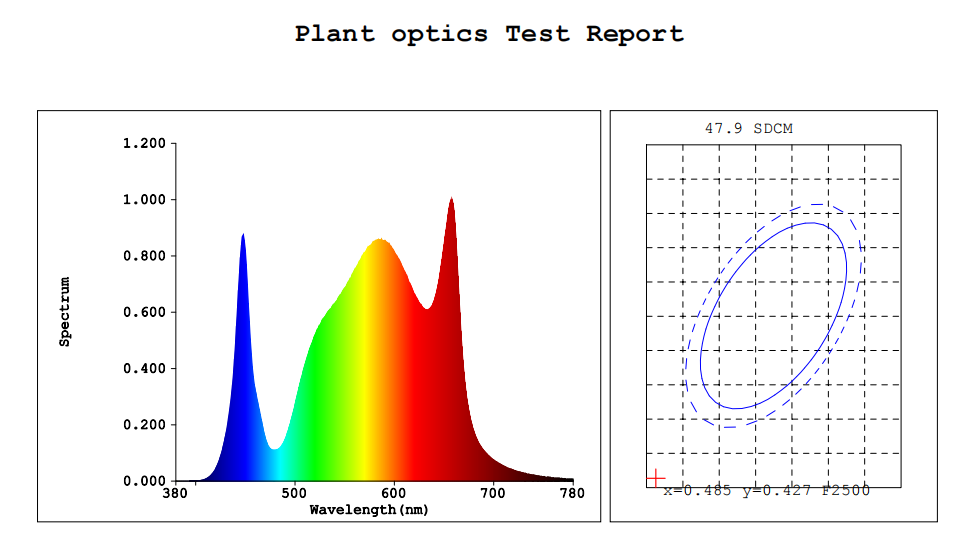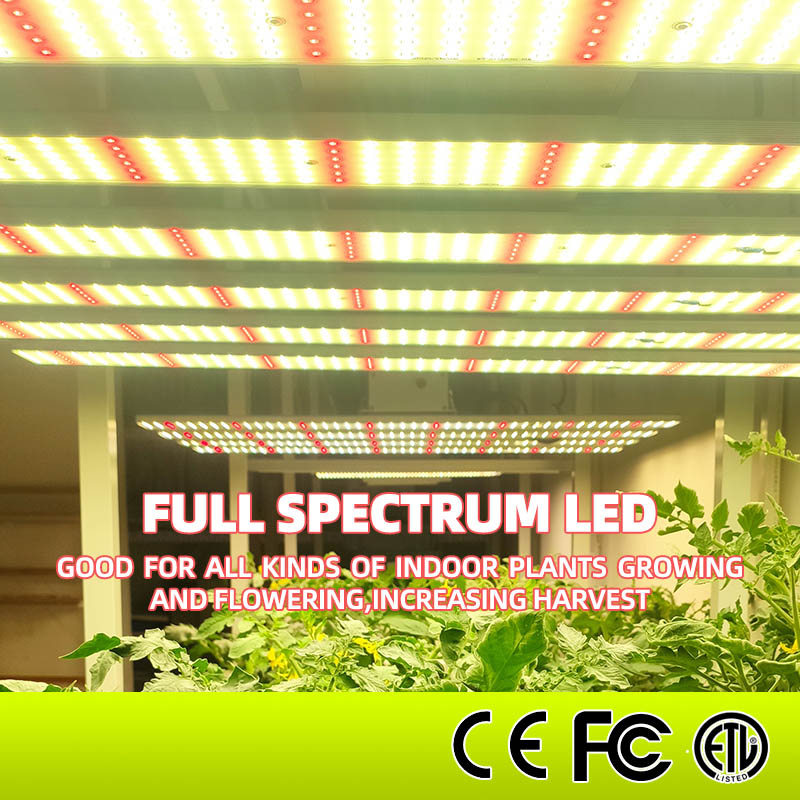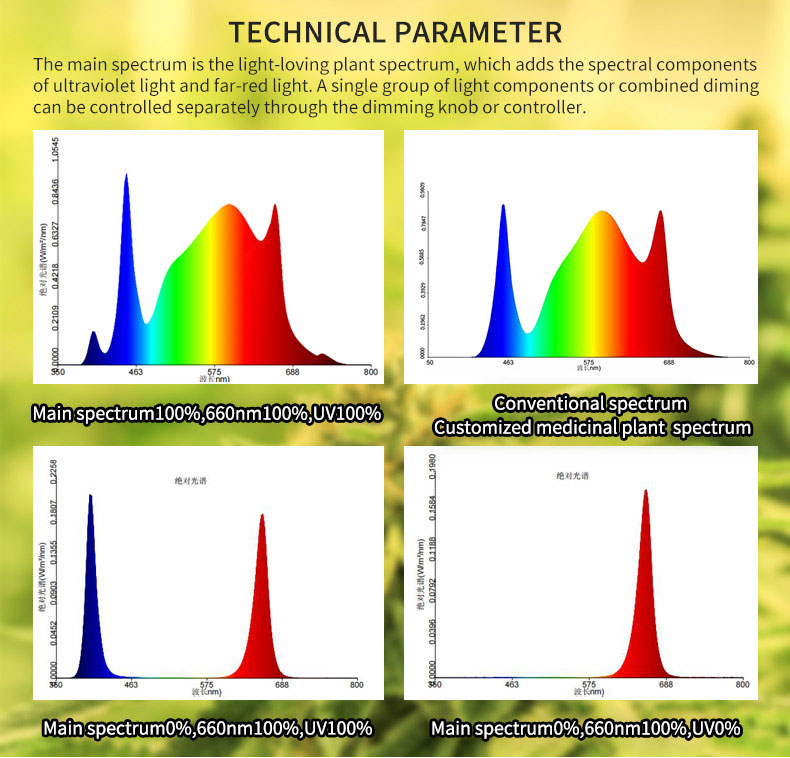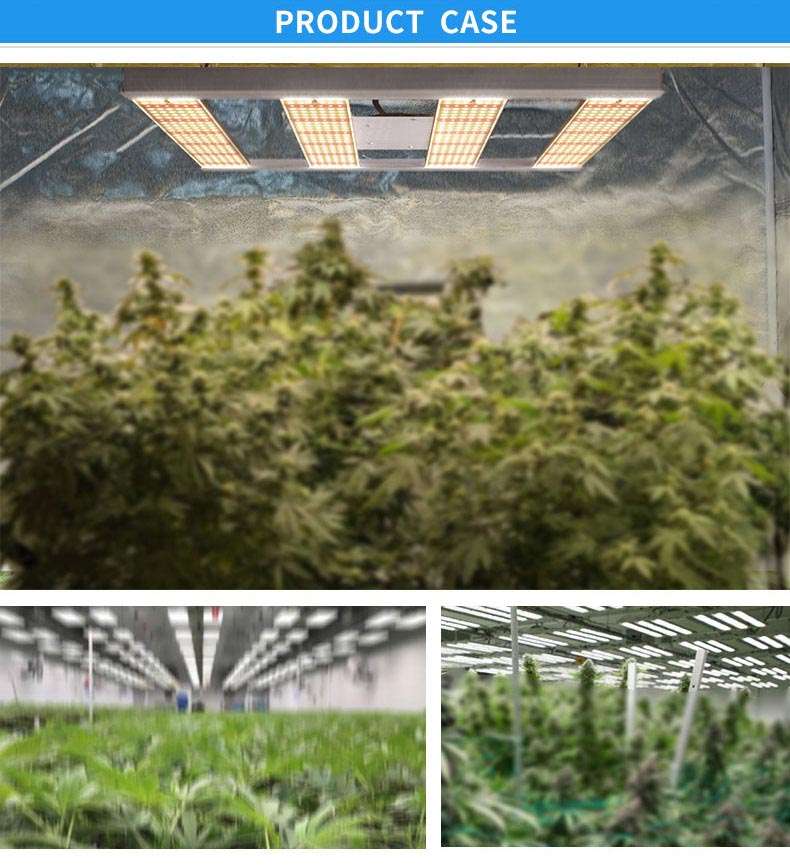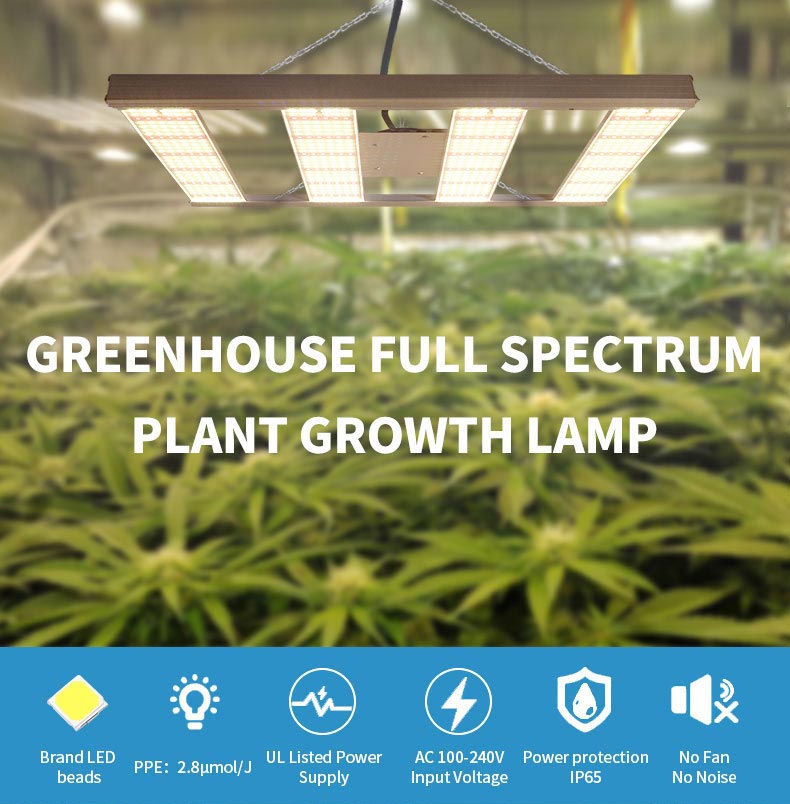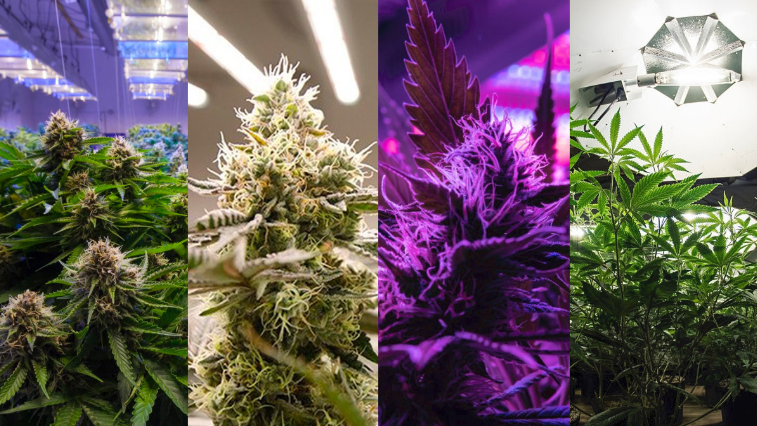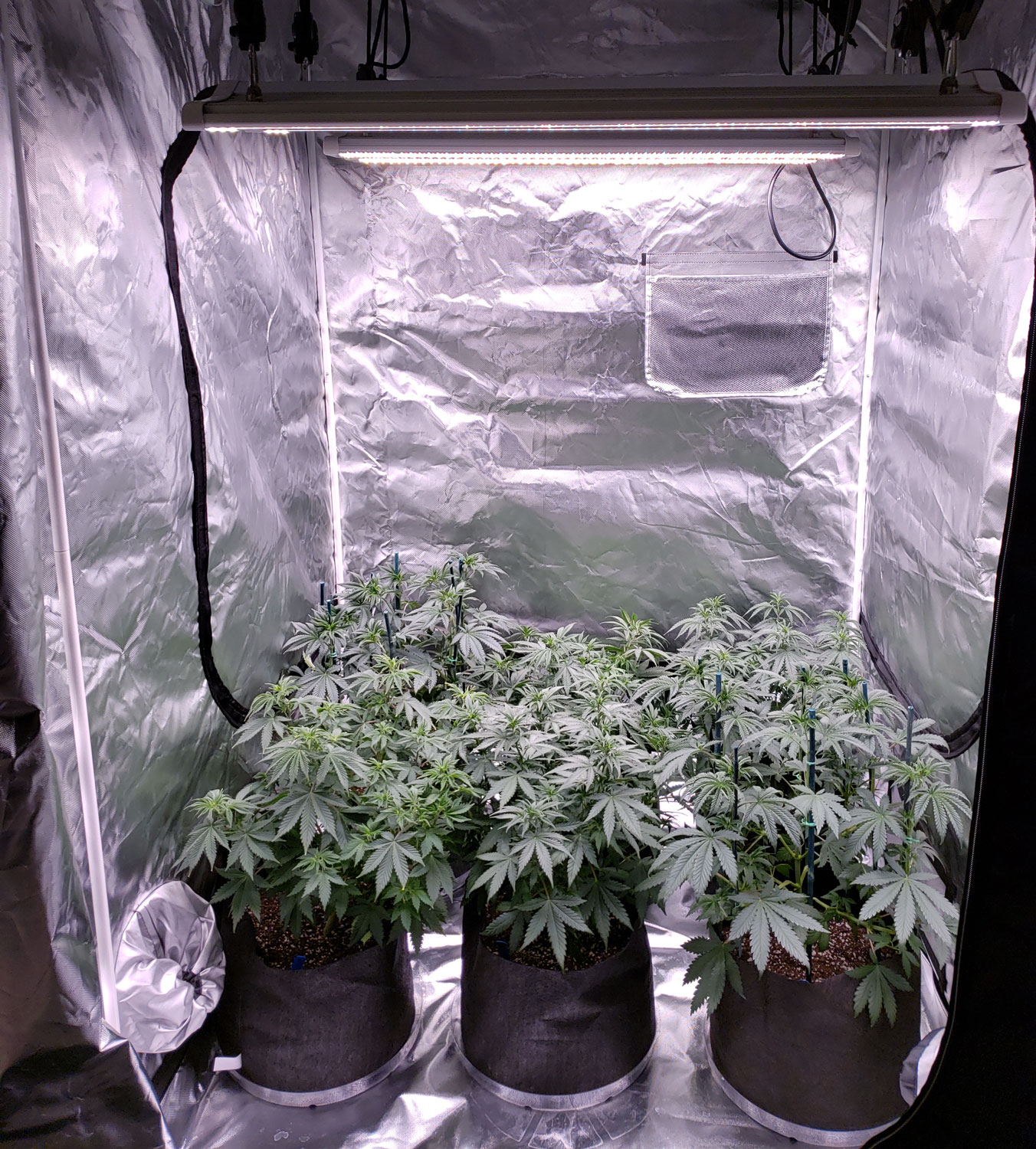Ultraviolet rays refer to light with a wavelength of less than 400m, accounting for 7% of solar radiation. High-intensity ultraviolet light less than 300mm is harmful to plants, and ultraviolet light less than 280m can kill plants. 320~340nm has little effect on plant cryptochrome. Sunlight is a continuous spectrum with wavelengths ranging from 100nm X-rays …
More-
Ultraviolet (UV) Plant Photobiology
-
The light quality requirements of plants-the research and development direction of light parameters of grow lights
Light is a key environmental element for plant growth and agricultural production. Photosynthesis is the main source of inorganic-organic transformation of materials on the earth. The wavelength in the range of 300mm to 800mm can be absorbed by green plant chlorophyll or photoreceptors. Around the world, before the 1970s, because there were only electric light …
More -
The core parameters of LED grow lights
Photosynthetic Active Radiation (PAR) The radiation of a specific wavelength range (400-700nm) used by plants for photosynthesis is called photosynthetically active radiation, and there are two labeling units: One is expressed in photosynthetic irradiance (w/m2), which is mainly used for generalized research on photosynthesis of sunlight. The second is expressed by the photosynthetic photon flux density …
More -
Plant light quality biology-the basis of LED plant lighting theory
In the solar spectrum, the optical radiation in the 300-800mm band is called Physio-logically active radiation, and the 400-700mm optical radiation is called the Plant Photosynthetically Active Radiation (PAR). The former includes near-ultraviolet and far-red light, while infrared radiation is not physiologically effective radiation. 380~780nm is visible light, part of ultraviolet light and far-red light …
More -
How many grams of weed can you get from an individual plant?(二)
SOIL AND NUTRIENTS PLAY IMPORTANT ROLES Cannabis plants have specific nutritional demands that must be met in order to push their yields to the limit. There are three nutrients in particular, known as macronutrients, that cannabis plants require above all else. These are nitrogen, phosphorous, and potassium. During the vegetative phase, when plants haven’t yet started to …
More -
How many grams of weed can you get from an individual plant?(一)
Wondering how much weed you’d be able to grow from a single cannabis plant? Find out what to expect when growing your own. There’s no question that the goal of cultivating cannabis is to obtain the biggest yield possible. Whether you’re growing THC-rich buds to procure a stash that will get you stoned for months …
More -
How much weed can you grow indoors on 1m²?
Roughly? Anywhere between 0 and 700g/m². Unfortunately, a more precise answer to this question isn’t that simple. The amount of cannabis you’re able to produce indoors depends on a wide variety of factors, including: *the genetics of your plants*the quality of your equipment*the nutrients and grow medium you choose to use*the actual space you plan to grow …
More -
Different kinds of light used for growing
There are a number of different types of lighting systems used for growing cannabis indoors. They vary in function, type of light emitted, power usage, and cost. Knowing what they are and how they perform will help you make an informed decision on how to get the yummiest nuggets in the jar. HID LIGHTS HID …
More -
How much does it cost to grow marijuana indoors?
Wondering how much it costs to grow cannabis indoors? Click here for a brief guide on the costs of growing your own weed. You can grow weed indoors for as little as 10 euros. All you need is a seed, a pot with some soil, and a windowsill. But let’s be honest; that’s not going …
More


